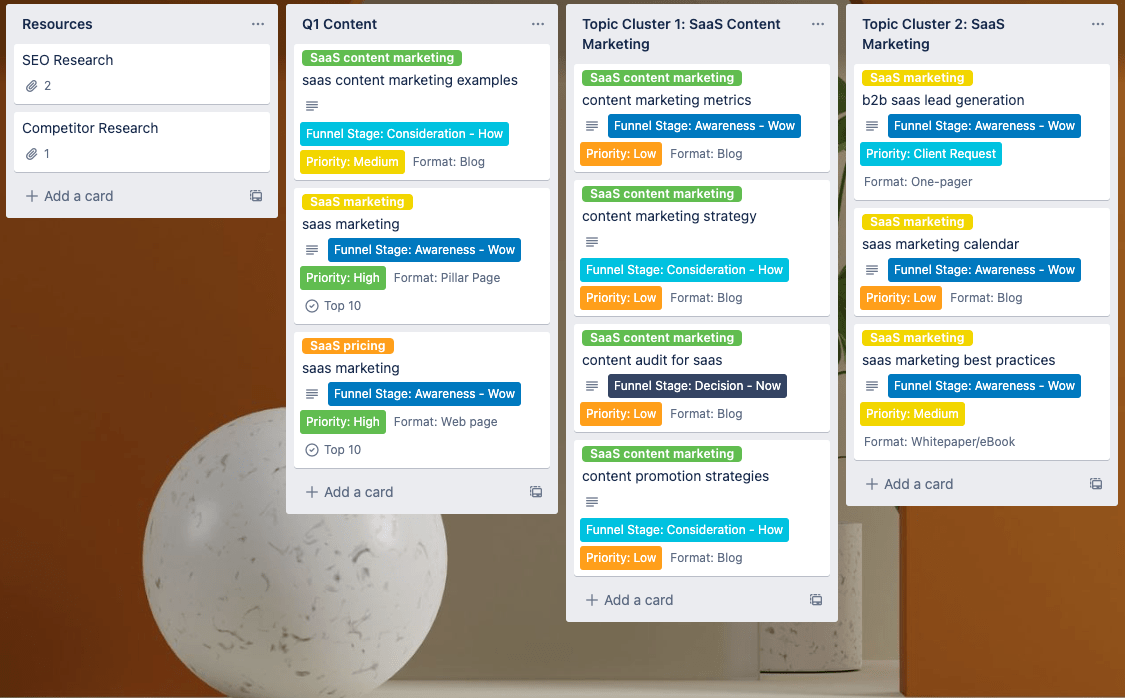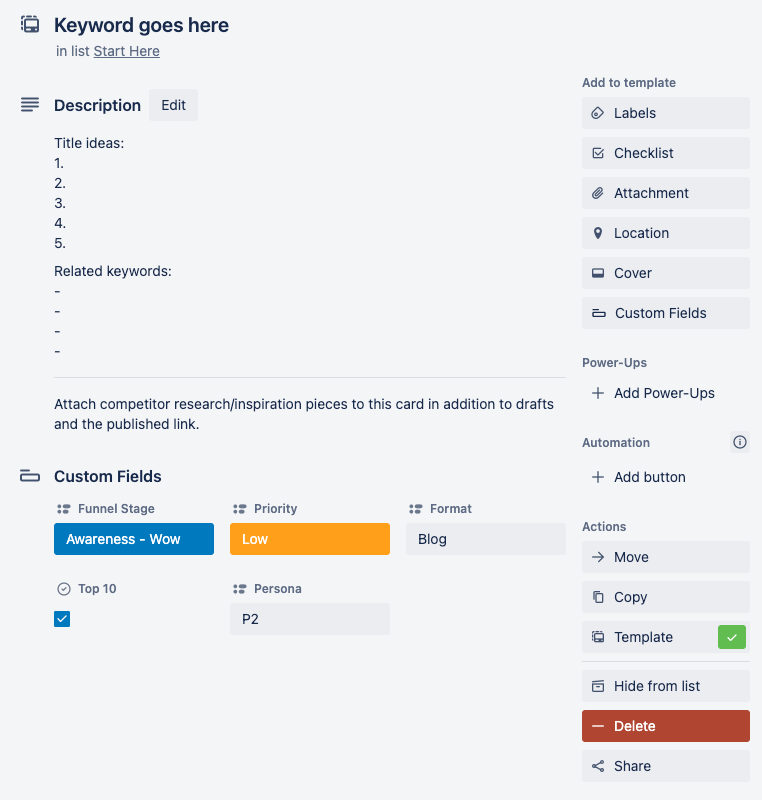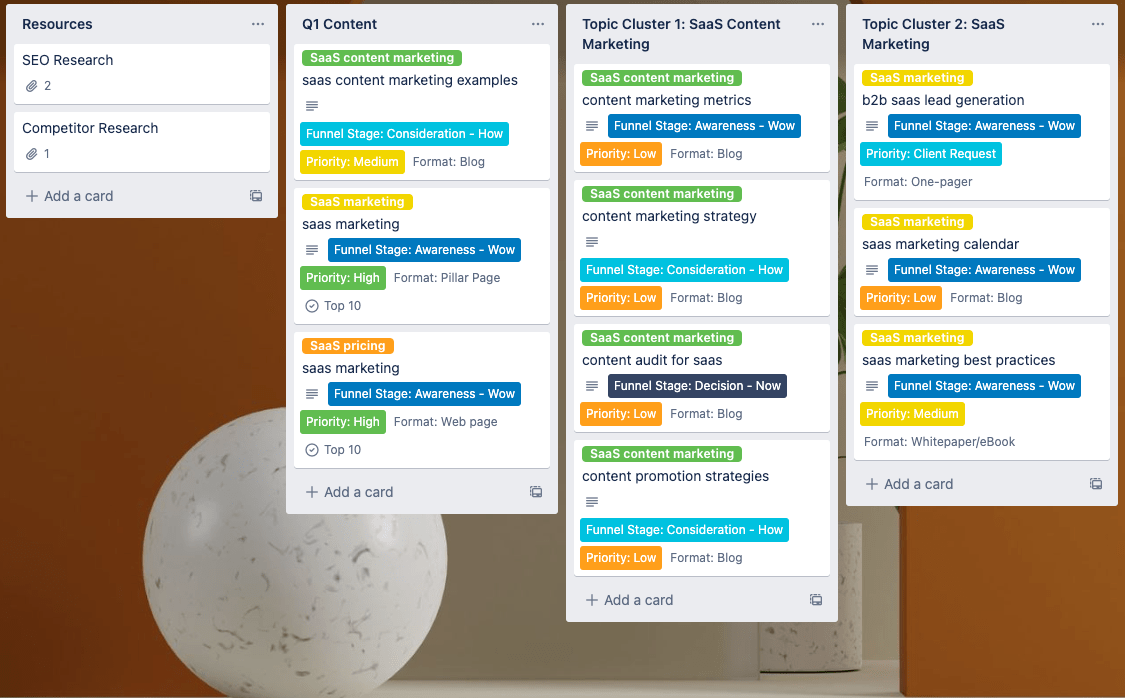Your content strategy is one of the best ways to boost website traffic, establish yourself as a thought leader, provide valuable information to your prospects, and showcase your product. When it comes to employing an effective strategy, HubSpot’s topic clusters help you provide valuable information while building your website authority.
If you aren’t familiar with the topic cluster concept, here’s the TL;DR—
Topic clusters are comprised of related keywords.
Pillar pages are long blogs (~2000 words) that relate to all the topics in the topic cluster.
Cluster content are all smaller blogs (~1000 words) of content for the keywords in the topic cluster. They will link back to the pillar page.
Why should you use a topic cluster strategy?
- Increase website authority
- Provide relevant, valuable content to your prospects
- Make it easier for Google to crawl your website
- Increase SERP rankings
To learn more about topic clusters and their value, check out HubSpot’s blog.
Here’s the thing about topic clusters: once you know what they are, there are many different ways to approach the research and writing portion. This means it’s easy to get stuck and, at times, lost. So the question is, what’s the best way to come up with a well-researched big-picture plan?
I’ll walk you through the best practices I use when planning content for my topic clusters. Once you have this foundation, it’ll be easy to map out your content calendar for each quarter.
Step one: Gather your resources
Before you start your big-picture plan, you need to get organized. This will help you minimize distractions and focus on the most relevant keywords. I recommend gathering the following:
- SEO research
- Organized topic clusters & appropriate keywords
- Top competitors
- Current content audit
It will also be helpful down the road to know which topic clusters are the highest priority, which leads me to step two.
Step two: Prioritize your high-priority keywords
In order to tackle your research effectively, you need to know where to start. One of the best ways to narrow down your focus is by identifying 1-3 topic clusters that are your top priority. This will help you focus your efforts. In addition, I recommend aligning with key stakeholders and picking your top 10 focus keywords that you want to show up on Google. Your quarterly marketing goals will also play a role in which keywords you focus on.
By identifying these focus keywords and topic clusters, you’ll not only have a starting point for research but a plan for the first several quarters as you focus on what matters most. With this knowledge, you can also identify quick wins. For example, if your prioritized keywords happen to fall under a high-priority topic cluster, you can work on a pillar page and the prioritized keyword first.
Step three: Organize your information
Now it’s time to organize everything. If you download my Trello board, it’s already set up and ready for you to start plugging in your information. Add one topic cluster per column and edit the labels to match, so that even when you move your Trello cards around, you’ll still know what topic cluster you’re writing for.
After that, it’s time to add the appropriate keywords. If you have a lot of research, I recommend starting with your prioritized topic clusters and keywords. If you tackle these in one session, you can add other topic clusters as your time allows.

Step three: Research
This refers to your keywords, Google, and your competitors to come up with title ideas and the actual content for your blogs, whitepapers, eBooks, etc.
When it comes to research, there are two core different ways to approach it.
- Research keywords in real-time as you add them to the appropriate column in Trello
- Add all the keywords to the Trello board first and then research one topic cluster at a time
Whichever method you choose, it’s important that you cover all your bases during the research process. If you completed a content audit prior to going through the SEO research, keep that handy. Then, for each keyword, do the following:
- Google your keyword for inspiration pieces, title ideas, and related searches
- Look at your top competitors to see how they’ve covered this topic or keyword
- Use a tool like SEMrush to see the highest-ranking pieces of content for your keyword
- Use your content audit to see if you have anything that relates to your topic
Not only are you looking for inspiration, but you are also looking for ways to add value. Did your competitor fail to fully answer a question? Is there room to expand? Make notes as you go—you are chasing the highest value add to help your prospects.
You can also use this opportunity to expand keywords to match what your prospects are looking up or edit the language to better match your results. You don’t need to reinvent the wheel and create net-new content every time—you can instead build off of what already exists.
| Pro tip: After Googling a keyword, I like to click through the “people also ask” for more content ideas. If you want to take it a step further, you can plug those questions into a forum like Reddit. This will help you get to the heart of what your prospects are looking for. |
As you follow each step, fill out the Trello card for that particular keyword with:
- Relevant website attachments
- Title ideas
- Funnel stage
- Person
- Keyword intent
- Priority or top 10 keyword
- Content format (blog, webpage, eBook, infographic, etc.)
- Related keywords you can include or write about

Step four: Align with goals
The goal of a big picture plan isn’t to act on it right away. It’s to
- Get an idea of the landscape surrounding your product or market
- Gather your resources so you can meet specific goals
Without goals, your next steps won’t be clear. Do you want to rank quickly for specific top keywords? Build authority around a topic cluster? Put out a wide range of Awareness content to build your authority?
Align with your key stakeholders, then use your expertise to inform how best to approach the goals and the content for each quarter.
Remember, you prioritized your keywords and topic clusters for a reason. Once you’ve completed that research, you can start creating content while working on other topic cluster research in the background.
Step five: Create quarter-specific calendars
What’s the best way to meet your goals? By going one step at a time. You can create a column in your Trello board for specific quarter goals. Drag your intended keywords there. Then, use this bite-sized information to fill out a content calendar in a tool such as Google Sheets or Asana to track your progress and results.
If you have to present a calendar for buy-in, it’s much easier to show off 12-16 pieces of content for the quarter versus 100+ from your initial SEO research. To minimize going back and forth between your Trello board and quarter-specific calendar, I recommend keeping Trello just for research & big-picture organization. Make incremental changes and updates on drafts, publishing, and rankings on the calendar.


